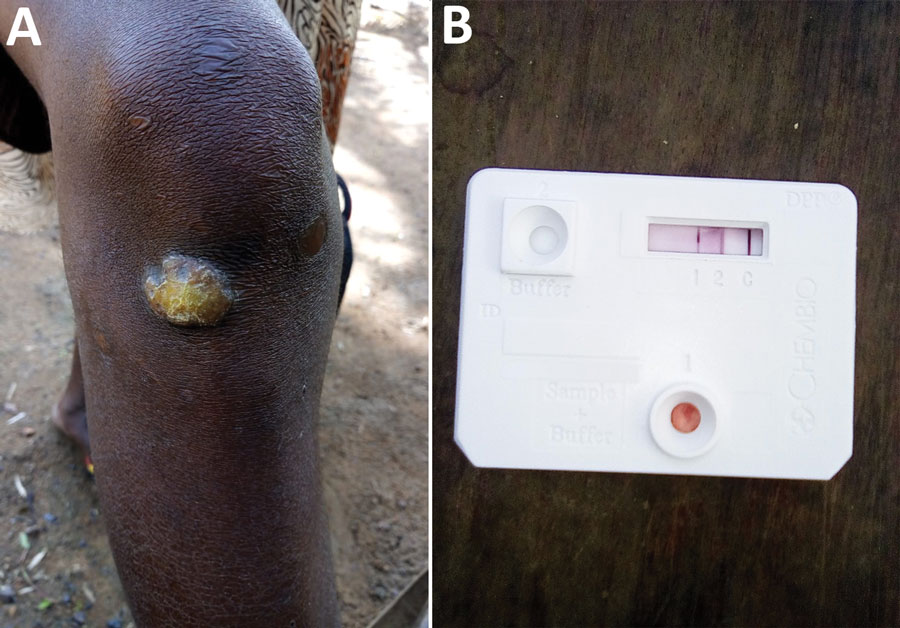Volume 27, Number 4—April 2021
Research
Epidemiologic and Genomic Reidentification of Yaws, Liberia
Figure 1

Figure 1. Clinical presentation and serological results of the first confirmed case of yaws since the 1970s and first whole Treponema pallidum subspecies pertenue (TPE) genome from Liberia. A) Papillomatous yaws lesion below the right knee. B) Paired serological results from this case. Dual path platform syphilis lateral flow assay (ChemBio, https://chembio.com) shows antibody binding to treponemal and nontreponemal antigen indicative of active yaws infection. A complete genome sequence was recovered from this case (Figure 3).
1These senior authors contributed equally to this article.
Page created: January 13, 2021
Page updated: March 18, 2021
Page reviewed: March 18, 2021
The conclusions, findings, and opinions expressed by authors contributing to this journal do not necessarily reflect the official position of the U.S. Department of Health and Human Services, the Public Health Service, the Centers for Disease Control and Prevention, or the authors' affiliated institutions. Use of trade names is for identification only and does not imply endorsement by any of the groups named above.